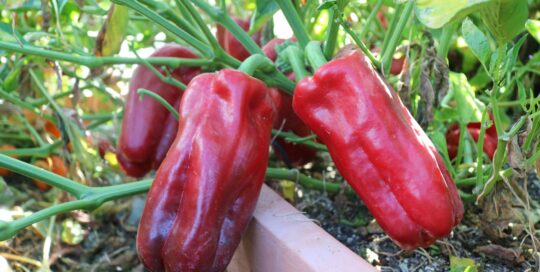Climate Change and Longer Seasons
Views: 96

Climate change is impacting your garden and your gardening activities in multiple ways. You may have noticed some signs of this already—your cold-weather greens lasting through the winter, for instance, or your garlic sprouting early. The warming climate’s impacts can be and are more insidious than destructive storms and continent-wide drought, and they are appearing in our own landscapes.
This post is the first of a multi-part series on the effects of climate change in the garden. We’ll begin with what I alluded to above—your growing seasons lasting longer than they had in the past.
Climate Change Extends Growing Seasons
At first glance, having your growing seasons lengthened—with an earlier start in spring and a later die-down in the fall—might seem like a wonderful thing. Harvest cold-weather greens deep into winter as I mentioned above, or get those tomatoes and peppers in the ground a week or two earlier. You’ll have more to harvest or an earlier harvest. What could be wrong with that?
Here’s what can be wrong with that. Plants that flower earlier may miss the emergence or migration of the bees, moths, butterflies and other creatures that pollinate them. The same “two ships passing” scenario could happen with beneficial insects and the “bad bugs” they prey on. This could lead to population explosions of insects and pests that will devour or otherwise harm your crops.
Climate Change Changes Growing Zones
The longer growing temperatures extend through the years, pushing back what we gardeners call the “shoulder seasons,” the fewer and less chance there is of cold days. This has resulted in the U.S. Department of Agriculture adjusting some of the Plant Hardiness Zones to a half-zone warmer. Read the USDA’s reasons for the changing map HERE, and use THIS MAP to find your zone and to see if it has changed since the 2012 map.
The implication of such changes in growing zones is that it allows plants and pests from warmer zones to survive in regions in which they once were not able. This non-native flora and fauna will compete with native elements and could overtake them. In other words, keep an eye out for weed, insect and disease-causing species that you haven’t experienced previously.
Actions to Take in the Garden
We can’t simply turn the temperatures down, so how can we intelligently meet the challenges that extended growing seasons present?
- Plant tomatoes, peppers and other veggies that require pollinators at your usual time; i.e. do not give in to the earlier warm weather.
- Plant flowering annuals—likely already in bloom at your garden center—near your veggie patch to encourage what pollinators are buzzing around to visit your garden.
- Use row covers and small tunnels to protect your crops from munching insects.
- Use thick layers of mulch to discourage non-native weedy species from taking hold in your garden, and weed often!
These are just a few suggestions for making your garden more resilient to the effects of longer seasons. Next time we’ll discuss how climate change is impacting the very basis of your garden—its soil.
Meet Ellen Wells
When you’re raised on a farm, you can’t help but know a thing or two about gardening. Ellen Wells is our expert on edible gardening.…
Ellen's Recent Posts

Pepper Red Impact an All-America Selections Winner






